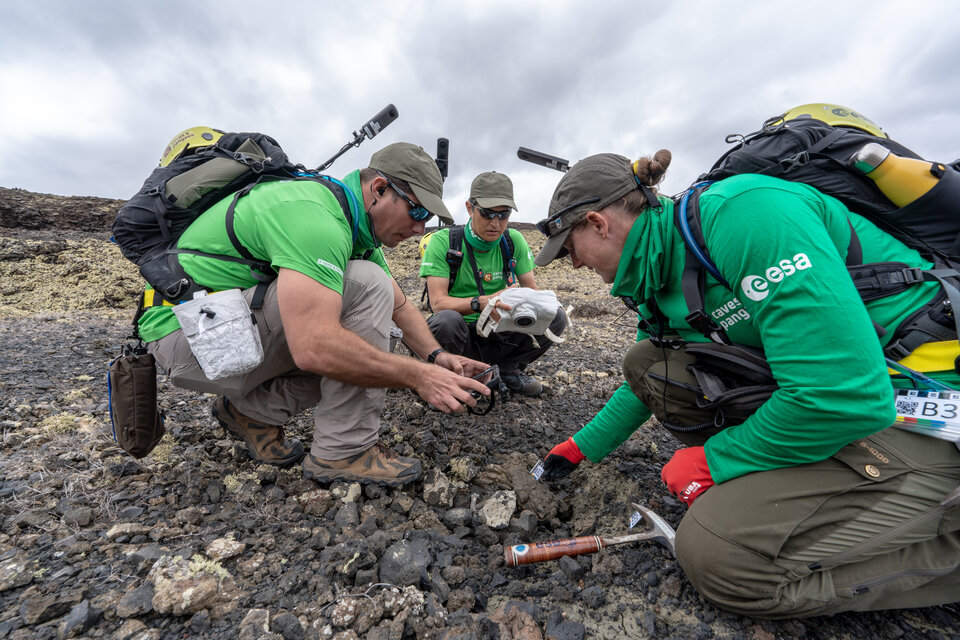
Next generation Moon camera tested in Europe
 Cette publication existe aussi en Français
Cette publication existe aussi en Français
To develop the best camera for the job, European astronauts and scientists are lending a helping hand to NASA’s Artemis imagery team
The engineers behind the Handheld Universal Lunar Camera (HULC) worked with ESA in the lunar-like landscapes of Lanzarote, Spain, to put the new camera through its paces during the PANGAEA training programme.
PANGAEA prepares astronauts to become effective field scientists for future missions to the Moon. The programme saw an international crew testing the capabilities of the camera in realistic scenarios for geological exploration.

During the geological field trips astronauts document their exploration work using the ESA Electronic Field Book – a tool that allows PANGAEA’s geology instructors to follow and support the crew from the science room. This year, the science team received live audio and video in real time.
“Adding the Moon camera allowed the crew to have a realistic taste of lunar surface exploration. It was a great enhancement of their experience, something we’d be happy to repeat in future editions,” says Loredana Bessone, PANGAEA’s Project Lead.
The new lunar camera is built from professional off-the-shelf cameras with great sensitivity to light and state-of-the-art lenses. To prepare it for space, the NASA team made several modifications, including adding a blanket for dust and thermal protection – temperatures range from minus 200 to 120 degrees Celsius on the Moon – as well as a new set of ergonomic buttons for astronauts wearing gloves in bulky spacesuits.
Astronauts of the Apollo 11 mission took iconic images of the Moon with a very different camera – a standalone, mechanical Hasselblad camera with a Harrison Schmidt 60 mm lens. During the entire mission, the astronauts collected 1407 photos from four of these cameras.
The Artemis Moon camera will be the first mirrorless camera for handheld use in space. Mirrorless cameras provide excellent image quality in low light situations, making it well suited to the challenging high contrast environment of the Moon.
The camera will also record videos. Videos can provide situational awareness to the ground teams and help document the exploration of our nearest cosmic neighbour.
Learn more at www.esa.int
 If you enjoyed this article, you will like the following ones: don't miss them by subscribing to :
eeNews on Google News
If you enjoyed this article, you will like the following ones: don't miss them by subscribing to :
eeNews on Google News





